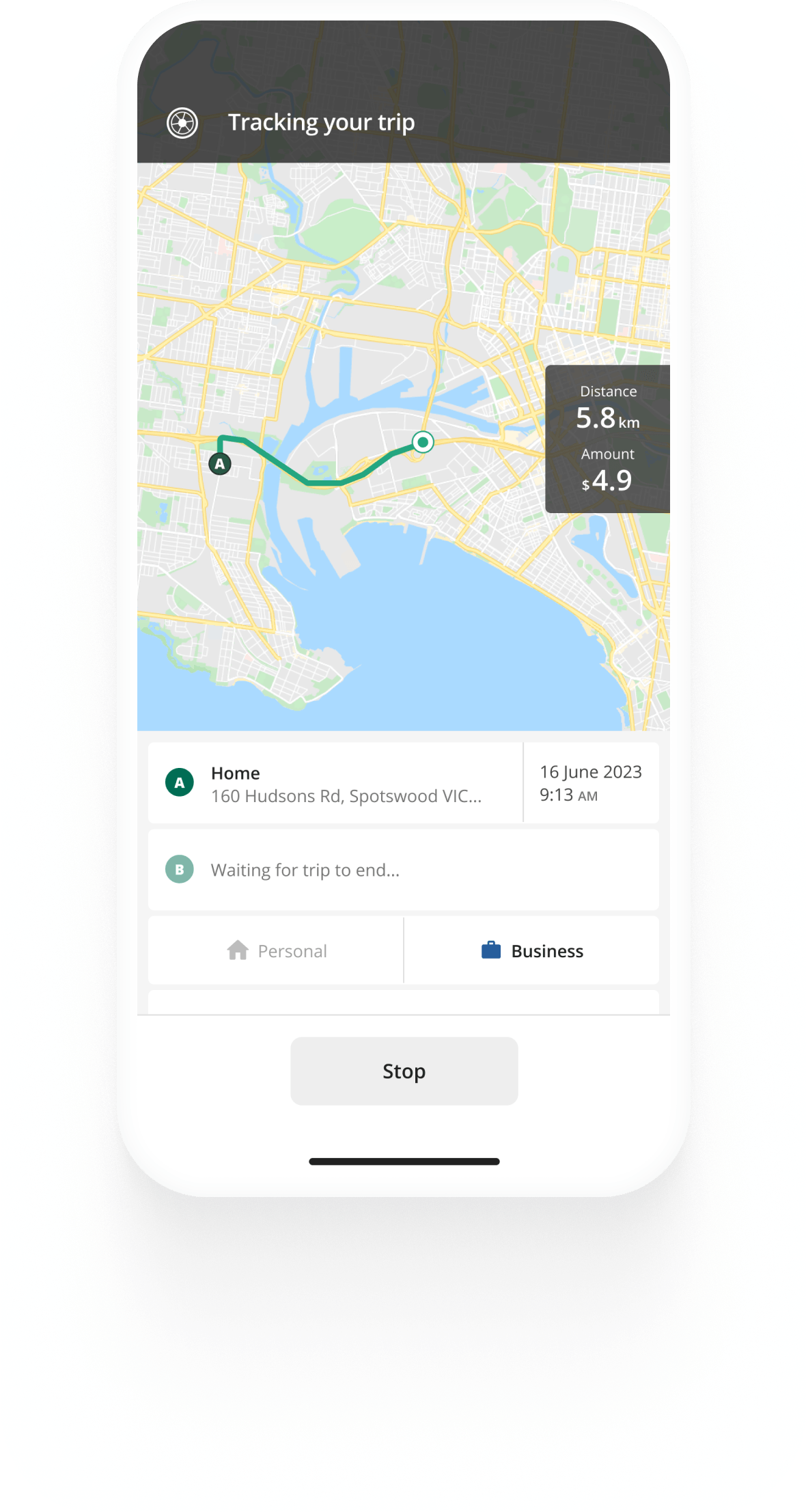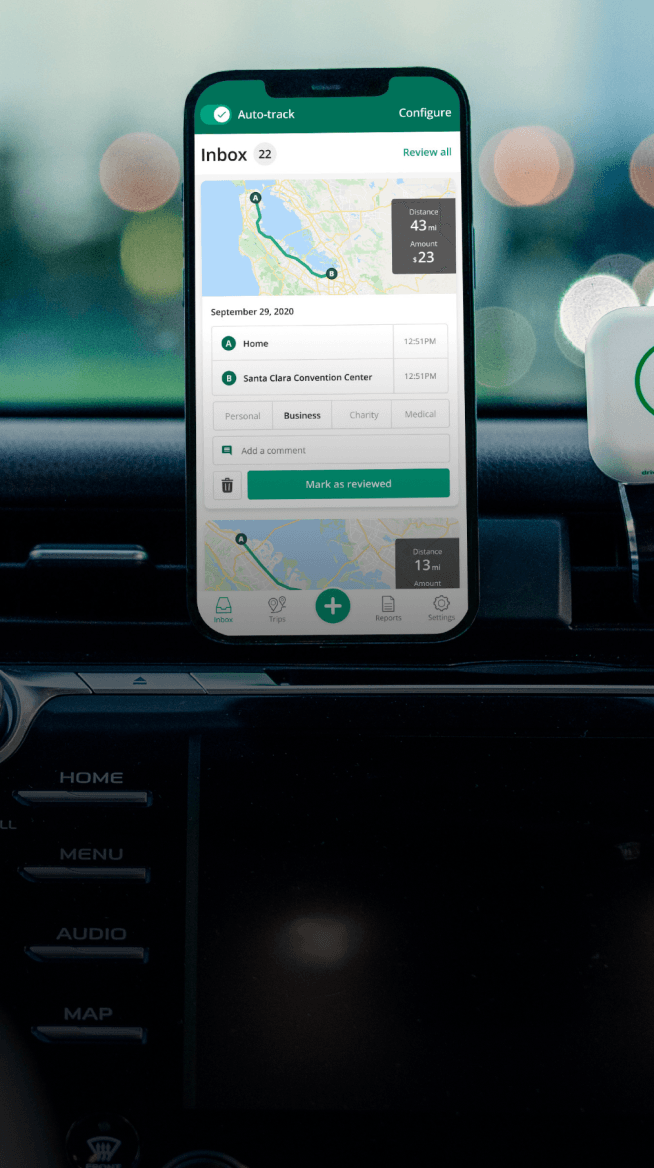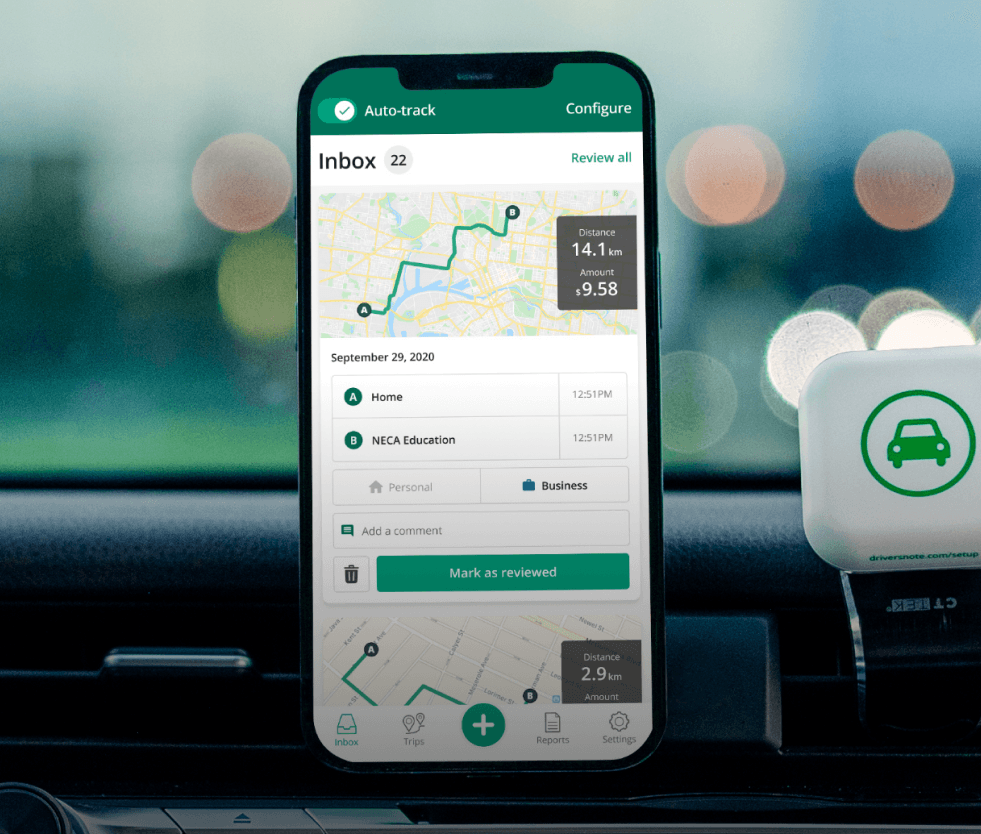Track mileage automatically
Get startedMileage Reimbursement Rules for Employers
In this article
- Do you have to reimburse your employees?
- Business mileage reimbursement methods
- Motor vehicle cents per km method
- Car allowance
- Claiming a tax deduction on the employee work-related expense reimbursement
- Accurate and tax-compliant recordkeeping of business travel
- Can I reimburse all my employees the same way?
- FAQ
- Do you have to reimburse your employees?
- Business mileage reimbursement methods
- Motor vehicle cents per km method
- Car allowance
- Claiming a tax deduction on the employee work-related expense reimbursement
- Accurate and tax-compliant recordkeeping of business travel
- Can I reimburse all my employees the same way?
- FAQ
Are you looking to learn the tax rules around reimbursing employees for their work-related car expenses? You have come to the right place. In this article, we’ll go over the different methods, regulations, and tax implications you should be aware of.
If you’re self-employed or an employee, take a look at our other dedicated guides on mileage reimbursement.
Do you have to reimburse your employees?
That depends. If your employees fall under a Modern Award or Enterprise Agreement, you would be required to pay out car expense reimbursements. Even if they don’t, it can benefit your business to do so, as you can claim the expenses as a tax deduction at the end of the financial year. Not to mention, a reimbursement policy can help retain and attract talent to your company.


Kilometre tracking made easy
Trusted by millions of drivers
Automate your logbook Automate your logbook

Automatic mileage tracking and ATO-compliant reporting.
Get started for free Get started for freeBusiness mileage reimbursement methods
There are two main methods for reimbursing business driving in Australia, and the choice is entirely up to you. Read on to see what the different methods entail and which would be better for your business.
The two most common vehicle expense reimbursement methods are:
- The motor vehicle cents per kilometre method
- Car allowance
Motor vehicle cents per km method
With the cents per kilometre reimbursement, you apply the standard rate for deducting work-related car expenses set by the ATO.
The ATO has updated the cents per km rate for the 2025/2026 tax year to 88 cents, unchanged from the previous year.
The rate is based on an estimate of annual vehicle expenses, and covers all costs associated with driving one’s personal car for business purposes, including ownership and operating costs. It’s normally paid out to employees after the fact, e.g. after employees submit last the month’s log summarising all the business trips they have taken in that period.
As an employer, you are not bound by the motor vehicle cents per km rate. The one set by the ATO is advisory and you can choose to instead reimburse employees at a higher or lower than the ATO rate.
Note: The rate represents the highest amount per km you can reimburse employees tax-free.
Reimbursing employees at a different rate
If your employees are reimbursed at the standard cents per km rate, they do not pay tax off of the reimbursement.
If you reimburse them at a higher rate, any amount over the standard rate may be subject to income tax.
If you reimburse them at a lower rate, they may be able to claim.
Car allowance
Another common method in Australia is to pay out a car allowance. The allowance is often paid upfront, on a monthly basis as a salary add-on. That also means it counts as taxable income, and is taxed according to the employees’ tax bracket.
Employees can use the car allowance to lease or purchase a car if they don’t already have one, or to maintain their current vehicle.
It’s a great alternative to the cents per km method for ensuring employees have cash on hand for any car-associated costs, such as lease payments or maintenance. It also works as an alternative to company cars, although providing those comes with plenty of advantages too.
Also read: Car Allowance vs Company Cars - What’s Best for Your Business?
Claiming a tax deduction on the employee work-related expense reimbursement
If you reimburse employees for using their personal vehicle for work, your business can claim a deduction on any car allowance or reimbursements paid out.
If an employee is using a company car and they are also able to use that car for personal use, you might be asked to show how the reimbursed expenses are connected to your business (see recordkeeping in the section below), and you may need to pay car Fringe Benefits Tax.
Accurate and tax-compliant recordkeeping of business travel
Whether your business is set up as a sole trader, a joint partnership, or a company, it’s crucial that your employees accurately log and report all of their work mileage, and keep it separate from any personal travel using the same car or cars (that could be either their private vehicles or company cars).
Depending on which reimbursement method you use to calculate your work-related car expenses, you will generally need to keep the following records:
- Kilometres travelled for business and private use (you need to be able to calculate the percentage)
- Any fuel, oil, repair, servicing, or insurance receipts
- Registration papers
- If relevant, any loan or lease documents
- Any relevant tax invoices
- Details of how you calculated your claim
This means that both you and your employees must keep records that are updated frequently to ensure their accuracy and tax compliance.
A digital vehicle logbook for easier reporting
To keep things simple, many companies use a vehicle logbook app that automatically tracks drives and applies the ATO’s standard cents per km rate. It saves time for employees, who no longer have to manually keep mileage logs, and relieves you of a heavier administrative burden.
Using the tax-compliant Driversnote for Teams digital vehicle logbook solution can also help:
- Standardise mileage reports across your company
- Avoid over-reported mileage claims or fraud
- Make sure your employees get the reimbursement they’re entitled to
- Save you plenty of time and unnecessary paperwork
Can I reimburse all my employees the same way?
Not necessarily. If different employee roles are covered by different Enterprise Agreements or Modern Awards, the requirements may change. However, unless those agreements or awards require a higher rate of reimbursement, the ATO cents per km rate provides a standardised way of reimbursing work-related car expenses to all employees.
FAQ

Tired of logging mileage by hand?
Effortless. ATO-compliant. Liberating.
ATO Mileage Guide
- For Self-Employed
- For Employees
- For Employers
- The Cents per Kilometre Method
- The Logbook Method
- ATO Log Book Requirements
- Claim Car Expenses In 5 Simple Steps
- Calculate Your Car Expenses Reimbursement
- ATO Car Expenses Deductions
- Car Fringe Benefits Tax
- Is Mileage Reimbursement Taxed?
- Historic Cents Per KM Rates
- ATO Cents Per KM Rate 2021/2022
- ATO Cents Per KM Rate 2020/2021